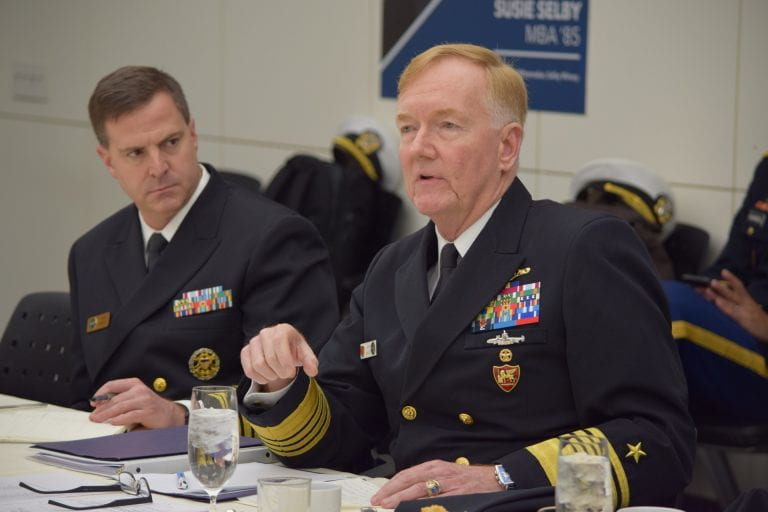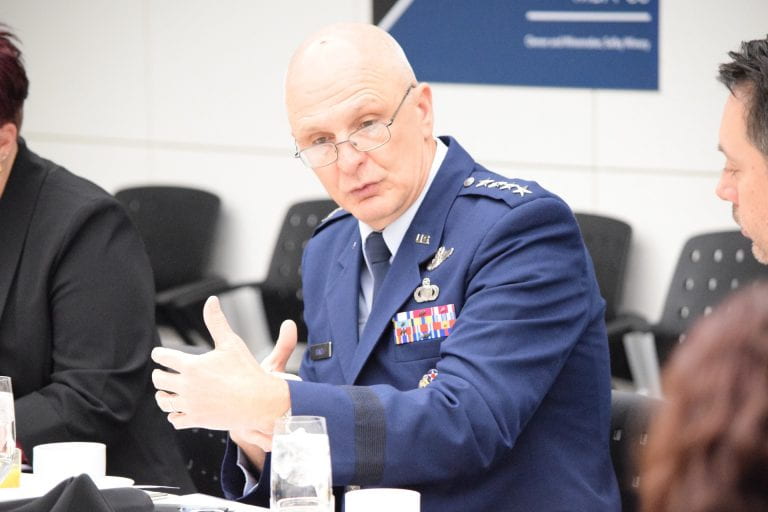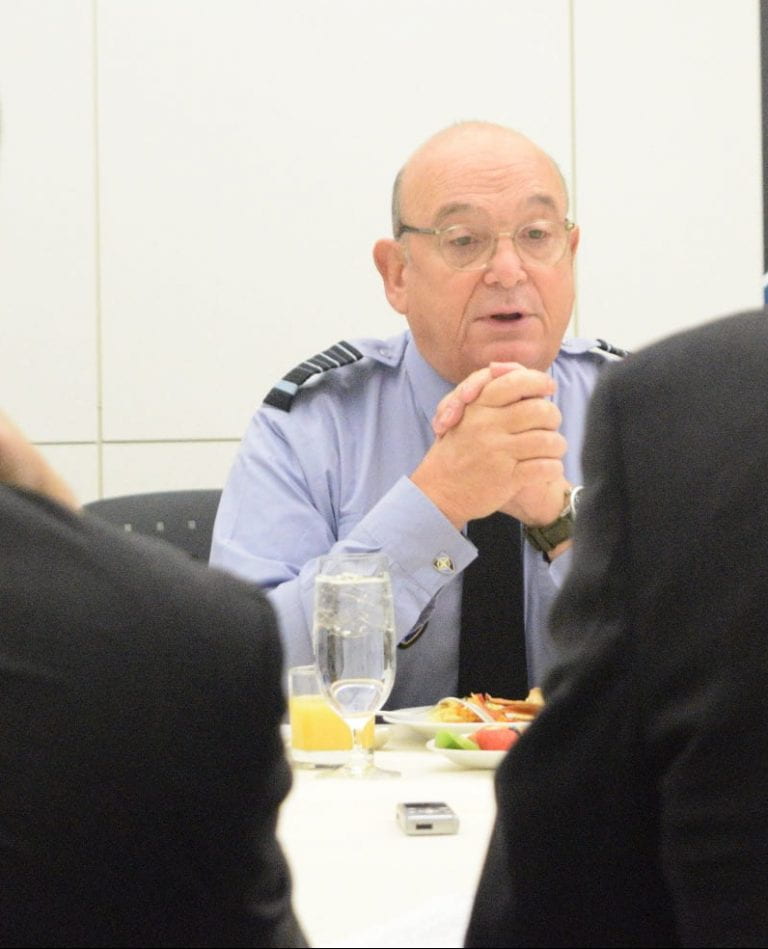Army To Navy: Hey, We Already Get Less $$ Than You by Sydney Freedberg of Breaking Defense
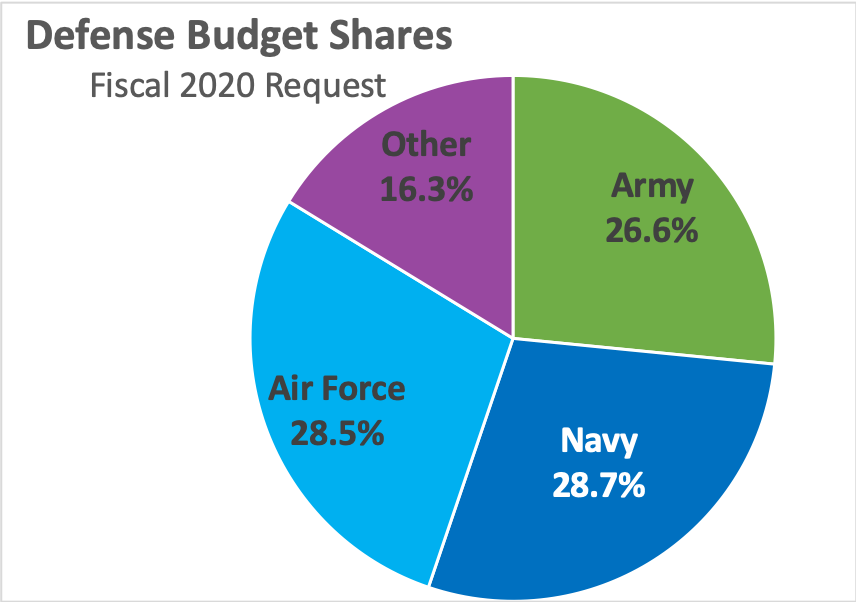
WASHINGTON: As inter-service budget battles break into the open, Army Secretary Ryan McCarthy is defending his service.
Yesterday, the Chief of Naval Operations crossed a red line by publicly declaring: My service should get a larger share of the Pentagon budget at the expense of the other two. (The Navy Department includes the Marines). “One-third, one-third, one-third … isn’t necessarily aligned with where we need to go against the pacing threat that we face,” said Gilday, a clear reference to China.
“Well, it’s not one-third, one-third, one-third,” Army Secretary McCarthy said at a press breakfast this morning. “The actual math: the US Army is 24 percent, so we have less than the other services.”

Army Secretary Ryan McCarthy
But even 24 percent is overstated, McCarthy continued: “It’s really like 22 percent, because 2 percent of our budget is to finance operations in the Middle East.”
Nor is it just the Middle East where the Army is in high demand, even if you don’t see tanks on the ground, because the Army regularly provides the Air Force, Marines and Navy with logistics, communications and other supporting infrastructure.
“The largest demand signal … is for US Army capabilities,” he said: “We’re 60 percent of combatant commanders’ requirements worldwide,” with the Air Force, Navy, and Marines making up the other 40 percent.
So does the Army need a larger share of the budget? McCarthy would only say: “Demand is incredibly high. This is simple economics, [so] you’ve got to continue to bring more capability to supply [that demand].
“This is a tough fiscal environment,” he said. “I don’t want to get into fights with other services about topline budgets — everybody needs budget increases year to year — …but it is not a one-third, one-third, one-third split. Not even close.”
The Real Numbers
The Army definitely gets less money than the other two services. But does it get about one-third of the budget, or less than a quarter? As in many math problems, the answer is “Yes.” Either figure is true, sort of, depending on what you count.
Let’s look at the budget numbers for 2019 and 2020. (For ’19 we’ll use final figures as enacted by Congress; for ’20 we’ll use the Pentagon’s request because, while the final appropriations bill passed, it uses different categories than the Pentagon figures so getting an apples to apples comparison could take days).
It is absolutely true that the Army gets less money than either the Air Force or the Navy Department (which, again, includes the Marines). In 2019, the Army got 8.6 percent less than the Navy and 7.3 percent less than the Air Force. In 2020, the Army actually did a little better: 6.9 percent less than the Navy, 6.5 percent less than the Air Force.
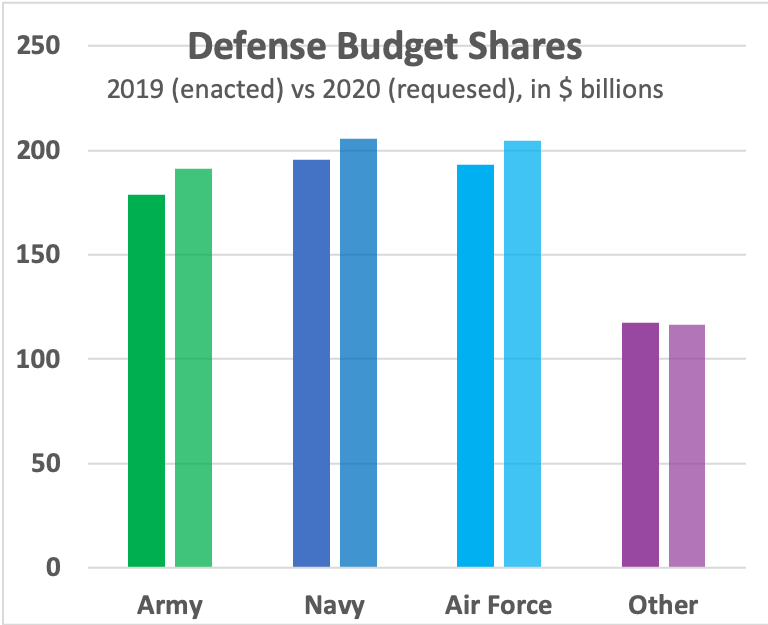
Those are significant differences, but not dramatic. When you count each service’s share of what the services get, it does come out, as Adm. Gilday said, to just about one-third each – though the Army gets a little less than a third and the other services get a little more. So in 2019, the Army got 31.5 percent, the Navy 34.5 percent, and the Air Force 34.0 percent. In 2020, the Army did a hair better, with 31.8 percent, versus the Navy’s 34.2, with the Air Force still at 34.0.
But the total amount the three services get is not the total Pentagon budget. There’s also the so-called “fourth estate,” a vast collection of joint and independent entities within the Defense Department. That’s everything from the Office of the Secretary of Defense to the Defense Information Systems Agency. Historically, the fourth estate has grown, but in recent years there’s been a deliberate effort to curb it. Its share of the total defense budget has gone down slightly, from 17.2 percent in 2019 to 16.2 percent in 2020.

Adm. Mike GIlday
If you count each service’s share of the total defense budget, then none of them gets anywhere near a third – although the Army comes out worst. In 2019, with the fourth estate share at 17.2 percent, the Army got 26.1 percent, the Navy 28.6 percent, and the Air Force 28.5. In 2020, with the fourth estate down to 16.2, the Army got 26.6, the Navy 28.6, and the Air Force 28.5.
There are still other ways to count these numbers. For example, the figures we used include Overseas Contingency Operations (OCO) and “emergency” funding. If you just count the base budget, the Army’s share drops further, to 21.9 percent in 2020, and to 23.6 in 2019. That’s presumably where Sec. McCarthy’s 24 percent comes from. But since all sorts of long-term investments have found their way from the base budget into OCO, not just urgent combat expenses, it’s really more accurate to count both, as we did above.
Bottom line: By any measure, the Army gets a smaller share than the other services. Those differences are measured in a few percentage points, true, but with the 2020 defense budget at $718 billion, one percent is $7.2 billion.
One percent of the Pentagon budget happens to be the amount Adm. Gilday said yesterday would be really, really, really useful to shore up the Navy’s shipbuilding budget as the service struggles to construct the immensely expensive Columbia-class nuclear missile submarines. It’s worth noting that while the Navy and Air Force have to spend heavily on nuclear deterrence, the Army has not had nukes for decades – part of the argument for its having a smaller share.
McCarthy is understandably unsympathetic to Gilday’s idea. After all, McCarthy and other top leaders spent months running the Army budget through the wringer as part of a painful “night court” process that cut or cancelled over 180 programs, all so they could fund their highest-priority programs within the budget share they had, rather than asking for more at others’ expense.
“We had to be ruthless,” he said. “The Army, we’ve really figured it out in a flat environment, because our leadership team was committed to making very had choices. The last two budgets, we’re cutting billions of dollars across the FYDP to be able to finance our initiatives.” In the Army’s Future Year Defense Plan for 2020-2024, it slashed $33 billion from lower-priority programs to plus-up the 31 most important systems. The 2021-2025 budget is not yet out, but McCarthy has said the Army found another $10 billion or so.
And while the biggest cuts came early on, the grueling process has to continue, especially as the Army’s 31 prototype programs move into the much more expensive production phase. For the foreseeable future, McCarthy said, “we’re going to have to do night court whether I’m in this job or not.”
Every cut hurts some constituency within the Army, its contractors, and Congress. So McCarthy probably doesn’t have a lot of patience for anyone saying they can’t possibly find funding within their own budget.
Others:
Federal Computer Week: Army chief says to expect fewer program cuts in 2021 budget
Defense One: USN: send money; Changes coming to F-35 logistics; NG’s new logo; and more…
Military Times: Army sets end-of-year window for SFABs to deploy outside Afghanistan
Military.com: Army secretary: Harder decisions to come in budgets beyond FY21
Army May Send Missile-Defense Systems to Middle East to Counter Future Iran Strikes
Army News Service: Back in session: 'Night court' reinvesting more funds for modernization goals
Army, Navy Leaders Disagree over Who Is More Relevant in the Pacific
Army Secretary Calls for Slowdown of Military Health Care Merger
Defense News: Army secretary: Harder decisions to come in budgets beyond FY21
National Defense Magazine: JUST IN: Army Secretary Says ‘Night Court’ is Here to Stay
Inside the army: McCarthy: Army's share of DOD budget 'not even close' to one-third
Defense Daily: McCarthy: More Program Cuts To Be Included In Upcoming FY '21 Army Budget To Fund Modernization
AI- Monitor: Pentagon considering reinforcing missile defenses after Iranian strikes
TASS: The Pentagon decides whether to send additional forces to the Middle East
The US said that the possible deployment of task forces in Europe depends on the commanders
Pressfrom: US mulls sending more missile-defense systems to Middle East: report
MSN.com: US mulls sending more missile-defense systems to Middle East: report
Fox News: US mulls sending more missile-defense systems to Middle East: report



